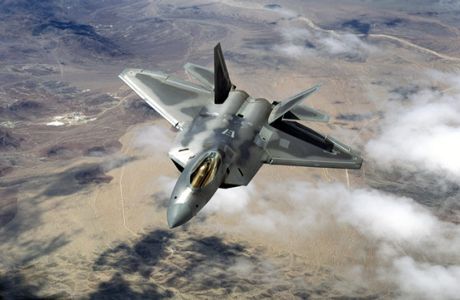This time it is the head of the Defense Advanced Research Projects Agency (DARPA), Dr. Arati Prabhakar, making the same observation as virtually every other senior uniform and civilian leader in the Department of Defense: U.S. weapons systems cost too much.
In an interview for the Defense News with Vago Muradian television show, Dr. Prabhakar observed that the American military’s penchant for sophisticated and expensive weapons systems is becoming a disadvantage. Air Force Chief of Staff General Mark Welsh has repeatedly voiced his desire to bend the cost curve for military aircraft. Cost and complexity result in fewer and fewer systems being produced over longer periods of time.
The U.S. built 20 B-2 bombers and 187 F-22s and only plans on acquiring three Zumwalt-class DG-1000s and one Ford-class aircraft carrier every five to seven years. These may be the best planes and ships in the world but they can only be in so many places at one time. Even worse, current and planned ships and planes will have insufficient magazines to counter our adversaries’ ability to deploy masses of cheaper platforms.
According to Dr. Prabhakar, the Pentagon is looking to her organization to solve the numbers and cost problems. “DARPA is coming up with ‘powerful new approaches’ to space systems, weapons, radar and navigation, and communications equipment.” Other research organizations such as the Office of Naval Research are investing heavily in directed-energy weapons (high-powered lasers, electro-magnetic rail guns and microwave devices) to radically reduce the speed and cost of engaging land, sea and aerial targets.
Frankly, no matter how smart they are, the officials and scientists at DARPA and all the government laboratories, the effort to find new technological solutions that will make weapons systems cheaper, is likely to fail. There are two reasons for my pessimism. First, you cannot bring down the price of a platform, be it a vehicle, ship, airplane or satellite, when only one customer exists, the U.S. military and it only buys in small lots.
It doesn’t matter that the Pentagon also is a lousy customer, constantly changing its mind about what it wants, how many items it will buy and who will get the contract. Want to know why consumer electronics have continued to decline in price even as their capabilities have expanded? It is because the market for these goods is massive, open and highly competitive. If the Air Force was able to buy a thousand F-35s a year and didn’t mess with the requirements, just imagine how low the price would go.
The second reason for my pessimism is that DoD, Congress and the administration put countless impediments in the way of an efficient acquisition system. Even when it tries to do sensible, cost-cutting steps, the Pentagon ends up making a mess of it. Take one example. Trying to reap the benefits of economies of scale that have reduced the price of everything from jet aircraft and automobiles to cell phones and microwave ovens, the Pentagon has tried to acquire a number of major items, jet engines for example, from commercial vendors. We are talking about the same engine on a military aircraft as on a commercial airliner. By buying a commercial item, the military gets a great price, particularly in comparison to what it would cost for an engine designed and built just for it.
But then what does the acquisition bureaucracy do? It violates the very contracting rules under which it is acquiring those commercial items. For example, it demands from the vendors detailed cost information on all the parts that went into the commercial item. Never mind the fact that the vendor doesn’t collect this information. Setting up such a tracking system would cause the price of the engine itself to rise substantially as the salaries and benefits for all those newly-hired accountants get tacked onto the cost charged to the government.
In some cases, the government also demands all the technical information on the item. This is intellectual property that the company spent billions of dollars of its own money creating. Now the Pentagon, which is generally not even the largest customer for these commercial items, thinks it can demand a special advantage and take what it will not pay for. This is kind of like you or me telling Apple that because we bought a couple of iPhones we want access to their operating software.
DARPA can invent miracle gadgets and weapons systems. It won’t matter. Until DoD reforms its acquisition system, simplifies its requirements process and buys in numbers that matter, costs for major weapons systems will continue to rise and quantities will decline.










